25 Most Influential Books in Mathematics 2010–2020

Mathematics is the study of the most general relational aspects of reality, or “formal” properties of the world. Such properties of things are strongly invariant under diverse operations, preserving the same abstract structural features despite different concrete empirical contents. For example, the number five is a feature both of the human hand and of the stars in the US flag. Thus, even though fingers and vertices are very different kinds of things, they do have something important in common: they are both instances of the number five.
Key Takeaways
- The mathematics study focuses on the high invariance of qualities, which preserves the same abstract structural features despite variations in concrete empirical contents.
- Mathematical concepts organize our lives and keep them from becoming chaotic, making them potent tools for global understanding and communication. Understanding the world through mathematics also helps us develop mental discipline.
- The most influential books in mathematics are for everyone; lay leaders, professional mathematicians, and lifelong learners.
The range of mathematics is extraordinarily wide, embracing everything from daily life (as in grocery shopping) to highly technical scientific applications (like nuclear power and the Internet) to pure math (which has no applications at all, but represents one of the highest expressions of the human spirit).
With all this in mind, we have compiled a list of the most influential books in mathematics of the past decade (2010–2020). We have assigned an objective measure of “influence” to each book within its subfield on the basis of the number of references it has received in both the academic literature and the popular media.
Note that our list does not necessarily represent the most popular math books overall published during the past ten years, nor is it a list of mathematics bestsellers during that time frame—for several reasons.
For one thing, we have excluded math textbooks and technical reference works, as well as sacred texts and all but the very most influential of fictional works, which may contain math-related material.
For another thing, our list includes several perennial classics that remain influential today. Not only do several such works retain great contemporary influence, in some cases they have even enjoyed a resurgence in popularity in recent years.
Nevertheless, ours is not a list of the most influential math books of all time. That list would have a very different look and feel to it. Rather, our list provides you with the 25 books on mathematics that have had the greatest combined academic and popular impact over the past decade.
If you’re interested in dedicating your college education to these and other essential mathematics texts, check out The Best Colleges & Universities for a Bachelor’s in Mathematics.
The Ultimate Books for Math Professionals and Enthusiasts
For some reason, many people think mathematics, with all its complex concepts, is useless after college unless you’re pursuing a math-related career. Everything about this is false. Mathematics students can quickly understand mathematical ideas and techniques, with strong retention, and apply them to other ideas and actual situations.
Human logic and mind are significantly influenced by mathematics. It provides a powerful method for developing mental discipline and improves logical thinking. Additionally, mathematical analysis is crucial to comprehend the world’s ideas, encompassing various scientific fields like physics, biology, chemistry, finance, engineering, and economics.
Mathematics and our Everyday Life
Without modern mathematics, we won’t have a very organized life. One of the biggest examples is math’s probability theory. In daily life, probability theory is employed extensively in various contexts, including weather reports, blood tests, congenital disabilities, sports, statistics, and many more.
Ever since the dawn of humankind, mathematics has accompanied and assisted men. The first time a man needed to find an answer to a query like “How many?” he created math.
Any process requires mathematical rapprochement; thus, anyone who wants to succeed in life should not doubt the importance of mathematics in it, starting with the average person. Mathematics is closely tied to natural phenomena and provides a means of unlocking many of nature’s mysteries.
Understanding mathematics is required to comprehend other areas of knowledge. All rely on mathematics to some extent. Other than mathematics being the key, there is no science, art, or expertise.
Advanced mathematics and the mathematicians who manage massive quantities of equations, such as algebraic equations and quadratic equations and algorithms, have helped us in our everyday lives.
You use complex analysis when you steer, brake, accelerate, or even when you use your turn signals. Intricate algorithms that are the outcome of insurance premiums also use advanced mathematics. Many other things we do in life involve mathematics, including shopping, playing video games, watching sports, buying insurance, encrypting information, investing, and even taking medicines.
Mathematics and the Society
Math plays a crucial role in society because it helps to launch social science research and analysis. This provides more evidence in favor of applying mathematical principles to social problems.
The culture’s evolution has significantly benefited from mathematics. In addition to science, mathematical ideas are also applied to advance daily living. This helps promote civilization within society.
Otherwise, read on for a look at The 25 Most Influential Books in Mathematics.
25 Most Influential Books in Mathematics
1.Our Mathematical Universe: My Quest for the Ultimate Nature of Reality
By: Max Tegmark, 2014
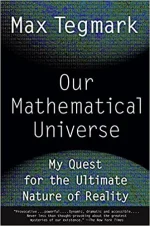

This book is a popular guide to the author’s vision of the mathematical structure that he believes underlies the ultimate reality of the physical universe. It traces the evolution of the visible universe from the beginning to the far future, concluding that the empirical evidence can be best understood as pointing to the existence of an eternal formal structure of separate worlds known as the “multiverse.” According to such a mathematical perspective, our own observable universe is only one of an infinite number of unobservable universes.
2.The Signal and the Noise: Why So Many Predictions Fail-But Some Don’t
By: Nate Silver, 2012
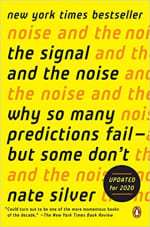

The author made his reputation by devising innovative ways to apply advanced probability theory to the standard analysis of baseball statistics (“sabermetrics”). In this book, he explains the basics of Bayesian probability theory for a popular audience, and then in a dozen or so chapters, he demonstrates how to think rationally in the light of that theory about a range of physical and social phenomena. In a nutshell, the book is about the best way to use statistical data to make predictions.
3.The Man Who Knew Infinity: A Life of the Genius Ramanujan
By: Robert Kanigel, 1991


This book is a biography of a singular figure in the history of mathematics, Srinivasa Ramanujan (1887–1920), who made substantial contributions to advanced number theory despite being born into modest circumstances in the Indian state of Tamil Nadu and having received almost no formal education in higher mathematics. Working entirely on his own, Ramanujan solved several outstanding problems in infinite series. He then sent a letter outlining his solutions to the famous British mathematician, G.H. Hardy (see #5 below), who took Ramanujan under his wing and made it possible for him to come to Cambridge University in the UK. It was there that Ramanujan made his most lasting contributions to mathematics and where he spent most of his remaining years before his premature death at the age of 32. The book was reprinted in 2016.
4.Concrete Mathematics: A Foundation for Computer Science
By: Ronald L. Graham, Donald E. Knuth, and Oren Patashnik, 1989
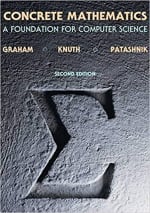

This book lays out the fundamental mathematics underlying the scientific theory and practice of computation. For the most part, the book is an expansion of the “Mathematical Preliminaries” unit in co-author Donald Knuth’s classic Art of Computer Programming (1968, and later editions). The style of the present work is more accessible, and it covers the individual topics more deeply at a more leisurely pace. A Second Edition was published in 1994. In it, several new topics were added, as well as new material tracing the book’s most significant ideas to their historical roots.
5.A Mathematician’s Apology
By: G.H. Hardy, 1941
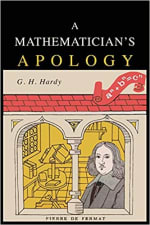

This is a classic text written for lay readers, but which many professional mathematicians say they have also read with profit and enjoyment over the many years since it was first penned by one of Britain’s finest mathematicians during the darkest days of World War II. Unlike many other books on this list, this small volume aims to share with its readers a sense of the profound beauty and spiritual elevation of pure mathematics. The author combines fascinating autobiographical material with a stylistic gift for the exposition of difficult abstract concepts. All in all, anyone who loves mathematics, or merely wonders what all the fuss is about, will not want to miss this delightful work, which was reprinted in 2017.
6.The Mathematics of Life
By: Ian Stewart, 2011
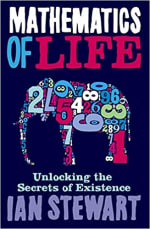

For many years, physicists dismissed the work of biologists as little different from “stamp collecting” because biology mostly lacked the ability to explain its data in theoretical—that is to say, mathematical—terms. Over the past several decades, the science of biology has profoundly changed in this respect. This book outlines for a popular audience the numerous ways in which mathematics now helps us to understand living systems at all levels, from the whole organism in its environment down to the molecular level.
7.A Mathematician’s Lament: How School Cheats Us Out of Our Most Fascinating and Imaginative Art Form
By: Paul Lockhart, 2009
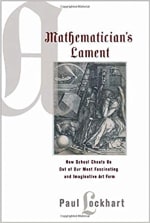

The author, who has taught mathematics from the primary to the tertiary levels, is concerned that the way we are teaching mathematics today fails to convey to students its most significant and appealing features. Namely, students are not being given a proper appreciation for the beauty of mathematics and its profound ability to inspire the human imagination. In short, the author believes that a different approach to math education has the potential to introduce students to the pleasures of the mind in a way that nothing else quite can.
8.Flatland: A Romance of Many Dimensions
By: A. Square (Edwin A. Abbott), 1884
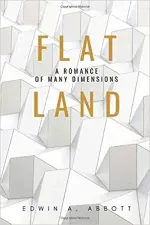

This classic of mathematical literature for a popular audience, which was originally published under the playful pseudonym, “A. Square,” has been treasured by generations of young and adult readers. It is essentially a brilliant introduction to the mathematical idea of dimensionality. Part of its great public success was due to the discussions of time as a fourth dimension that were occurring during the last quarter of the nineteenth century (for example, in connection with H.G. Wells’s famous 1895 novel, The Time Machine). Some of the best parts of Flatland illustrate the ways in which a four-dimensional object might interact with our normal, three-dimensional world. The book has been reprinted very many times, most recently in 2019.
9.How to Bake Pi: An Edible Exploration of the Mathematics of Mathematics
By: Eugenia Cheng, 2015
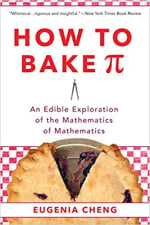

This book is an intriguing effort to make some highly abstract mathematics—notably, category theory—more palatable (no pun intended!) to lay readers by means of teasing mathematical principles out of the tempting recipes in an ordinary cookbook. The author says that while many of us think of math as being extremely difficult, in fact it makes difficult things easier for us to deal with conceptually. She expertly illustrates her claim by showing how various aspects of the art of cooking may be described by higher mathematics that throws light on the hidden structure of everyday life.
10.The Princeton Companion to Mathematics
By: Timothy Gowers, June Barrow-Green, and Imre Leader, 2008
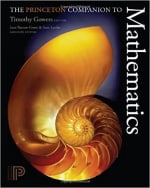

This volume is the most comprehensive survey of pure mathematics as it is being pursued in the world today. Covering all the most active and interesting branches of the field, the individual articles by over 150 distinguished authors are written to be accessible to a general reader, as well as specialists. An invaluable research tool for students, professors, and scholars, the book is especially useful for those desiring a quick and authoritative overview of a new field.
11.Concepts of Modern Mathematics
By: Ian Stewart, 1975
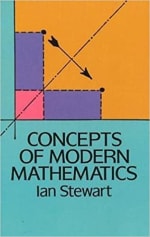

This classic contribution by ace popular math author Ian Stewart (see #6 above) introduces the general reader with a basic high school math background to many of the most important concepts of higher mathematics. Writing in an accessible style leavened with wit and charming anecdote, the author covers such topics as sets, symmetry groups, linear algebra, topology, real analysis, probability theory, the theory of computation, and more. The conceptual power and intellectual beauty of pure mathematics are emphasized throughout. The book was republished in revised editions in 1981 and 1995.
12.Why Johnny Can’t Add: The Failure of the New Math
By: Morris Kline, 1973
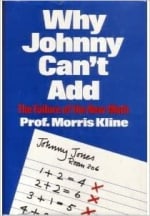

Kline is also the author of an authoritative, three-volume history, Mathematical Thought from Ancient to Modern Times, published in 1972. In this popular volume on the state of math education in the public schools in the early 1970s, he steps out of his role of professional mathematician and historian, and takes on the mantle of public intellectual. In that capacity, he demonstrates the intellectual poverty of the so-called “new math,” and argues vigorously in favor of the traditional methods of teaching math. This highly controversial book remains as relevant today is it was the day it was published almost 50 years ago.
13.The Mathematical Experience
By: Philip J. Davis, Reuben Hersh, and Elena Ann Marchisotto, 1995
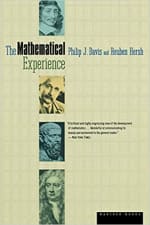

This unique volume provides a comprehensive introduction to contemporary mathematics that works on three distinct levels: (1) as a survey of advances in many of the most important subdisciplines of the field; (2) as a philosophical study of the conceptual foundations of those disciplines; and (3) as a review of some practical applications emanating from those advances. In addition, the book discusses the historical dimension of modern mathematics in each of its three aspects covered: pure math, philosophy, and applications. An updated Study Edition of the book was published in 2012.
14.The Music of the Primes: Searching to Solve the Greatest Mystery in Mathematics
By: Marcus du Sautoy, 2003
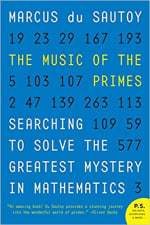

This book provides a lyrical, highly readable account of the life and work of Bernhard Riemann, with particular reference to his classic 1858 paper titled (in translation) “On the Number of Primes Less Than a Given Magnitude.” In that paper—one of the most significant in the history of number theory, and of complex analysis, generally—the author first stated what came to be known as the “Riemann Hypothesis,” which posits a specific structure to the distribution of the prime numbers. Many believe the conjecture is the most significant unsolved problem in all of pure mathematics. (See also #19 below.)
15.Hidden Figures: The American Dream and the Untold Story of the Black Women Mathematicians Who Helped Win the Space Race
By: Margot Lee Shetterly, 2016
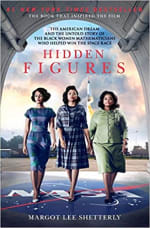

This book provides a riveting account of a dramatic, but little-known, chapter in the history of computing, the US military, and the space race. Before modern electronic computers became widespread, the term “computers” often referred to human computers—that is, individuals making calculations by hand with pencil and paper, slide rule, and mechanical adding machine. Specifically, the book follows a group of African American women who worked as human computers, first for military aviation during World War II and later for NASA during the early stages of the space program. Known as the “West Area Computers” within NASA’s Langley Research Center—where they were subject to Virginia’s Jim Crow segregation laws—these women are unsung heroes of American science.
16.The Almagest
By: Claudius Ptolemy, c. 150 AD
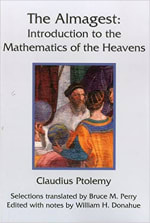

Claudius Ptolemy (c. 100–170 AD) was an imperial mathematician, astronomer, and philosopher at the court of the Ptolemaic dynasty in Alexandria, Egypt. His magnificent compendium of ancient Greek mathematical astronomy was written around 150 AD. Originally titled the Mathematikē Suntaxis (Mathematical Treatise), it eventually became known as hē megistē (“the greatest”) treatise on the subject of astronomy—an expression which later Arab astronomers expressed with the Arabic direct article (al) together with an Arabized form of the Greek sobriquet megistē, yielding the form, al-Majisṭī, which was then transcribed into Latin in the twelfth century as “Almagest.” The Almagest was first translated into English in 1952. A more scholarly edition and English translation by G.J. Toomer was published in 1984 and a Revised Edition of the latter was released in 1998.
17.A Beautiful Mind: A Biography of John Nash Forbes, Jr.
By: Sylvia Nasar, 1998
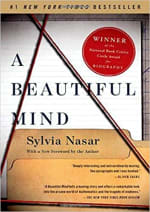

This book is the inspiring biography of a fascinating individual—the mathematician John Nash Forbes, Jr. (1928–2015). Although struggling with schizophrenia, Nash invented the new field of mathematical analysis known as game theory—a methodology that went on to become extraordinarily influential throughout the social sciences. For his invention of game theory, Nash was awarded the 1994 Nobel Prize in Economics. In addition to his work on game theory, Nash also made important contributions to partial differential equations and differential geometry. A well-received film version of this book was released in 2001. The book was republished in 2011.
18.Uncle Petros and Goldbach’s Conjecture
By: Apostolos Doxiadis, 2000
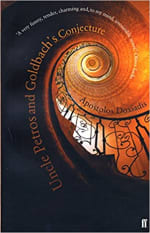

This novel, originally published in Greek in 1992, is cast as a family memoir centered on the colorful character of the narrator’s uncle. To all appearances, Uncle Petros is a typical Greek retiree: spending his days gardening and playing chess at a local Athenian kafenío. However, the narrator discovers that the old gentleman used to be a professional mathematician, who once staked his career on his conviction that he had solved Goldbach’s Conjecture. In this way, the novel manages to combine the excitement of a page-turning mystery with the charm of a modern-Greek backdrop, all in the service of helping the reader to better appreciate the eternal beauty and universal intellectual appeal of higher mathematics.
19.Prime Obsession: Bernhard Riemann and the Greatest Unsolved Problem in Mathematics
By: John Derbyshire, 2004
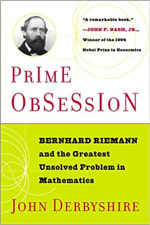

This book is another effort (see #14 above) to combine a biography of the great German mathematician, Bernhard Riemann (1826–1866), with a lucid exposition of his work for the general reader. Bernhard’s early death makes him a somewhat romantic figure. In his short life, he did highly original and influential work across several different mathematical subdisciplines, including pioneering work on differential geometry which turned out to have important practical applications in physics (for example, Albert Einstein’s General Theory of Relativity. However, Riemann’s most famous contribution—and the reason for the two books about him on this list, along with many others—is his famous hypothesis stating that there is a certain structure underlying the distribution of prime numbers among the natural numbers. Riemann’s Hypothesis, often considered one of the most outstanding in the history of mathematics, remains unsolved (unproved, but unrefuted) to this day.
20.“The Library of Babel” (“La Biblioteca de Babel”)
By: Jorge Luis Borges, 1941


In 1941, the great Argentinian writer, Jorge Luis Borges, published this brief narrative in a small collection named El Jardín de senderos que se bifurcan (The Garden of Forking Paths). An expanded edition of the collection entitled Ficciones (Fictions) was published in 1956 and translated into English (under the Spanish title) in 1962, catapulting its author into the very highest ranks of world literature. Like most of Borges’s “fictions,” this one has as its primary aim putting the reader into a meditative frame of mind and evoking a sense of wonder by vividly illustrating some philosophical or (as here) mathematical conundrum. “The Library of Babel” sketches the idea of a “total library” consisting of, not just all actual books, but all possible books. It has appeared in numerous other editions and translations over the years, notably in the 1998 volume Collected Fictions.
21.Metamagical Themas: Questing for the Essence of Mind and Pattern
By: Douglas R. Hofstadter, 1985
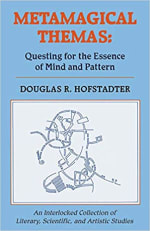

This is a thematically organized collection of articles that the author originally published as a column in Scientific American from 1981 through 1983. Hofstadter got that gig thanks to the remarkable publishing success of his 1979 Gödel, Escher, Bach: An Eternal Golden Braid, which brought several of the leading ideas of the science of computation—notably the notion of recursion—to a broad popular audience. Many of those same themes are in evidence in the present volume, which touches on a broad spectrum of fascinating topics from computers, mathematics, language, and philosophy to music, art, jokes, and games.
22.The Quants: How a New Breed of Math Whizzes Conquered Wall Street and Nearly Destroyed It
By: Scott Patterson, 2010
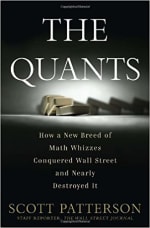

This book is about a particular, 20-year episode in the history of Wall Street, during which a cadre of young financial analysts with highly developed mathematical skills were given the keys to the kingdom. Known as “the quants” for their reliance on quantitative methods, they leaned heavily on mathematical models and computer simulations to make their stock market picks. They also pushed for and helped to develop the new digital financial infrastructure that today moves money around the globe at the click of a mouse. Unfortunately, the quants’ heavy reliance on math—so the author argues—set the stage for eventual financial disaster and the downfall of the quants themselves. This eventuated in the 2008 worldwide financial meltdown, which discredited the whole quantitative approach to investment.
23.The Fractal Geometry of Nature
By: Benoît B. Mandelbrot, 1982
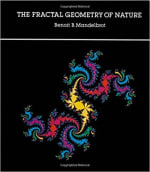

This volume is a revised, expanded, and lavishly illustrated version of an earlier French-language book first published in 1975. The author is the creator of the notion of a “fractional dimension” (whence the term “fractal”) in geometry lying between the first and second dimensions. Fractals have become extraordinarily useful in fields from pure mathematics, physics, and cosmology to computer graphics and, above all, hundreds of contemporary Hollywood movies! For those wishing to delve beneath the surface on this subject, this accessible and beautiful book is one of the very best places to start.
24.The Mathematical Theory of Communication
By: Claude E. Shannon and Warren Weaver, 1949
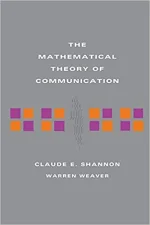

In 1948, a mathematician and electrical engineer working at Bell Labs published a paper which applied the formalism of statistical mechanics, including Ludwig Boltzmann’s entropy equation, to an ideal communications channel. Shannon succeeded in proving that the transmission of “information”—defined in a technical “syntactic” (as opposed to “semantic”) sense—is subject to certain limitations specified by his equations. This paper was immediately recognized as being of outstanding intellectual importance and was published in book form the following year (together with a non-technical essay by William Weaver). The book has been reprinted several times, most recently in 1998.
25.Alan Turing: The Enigma
By: Andrew Hodges, 1983
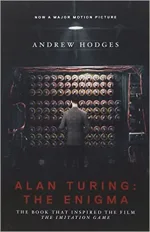

This is a biography of the great English mathematician and father of theoretical computer science, Alan Turing (1912–1954). Turing was a singular genius who led a fascinating, albeit tragic, life. In 1936, at the age of 24, he published his landmark paper, “On Computable Numbers,” which outlined the minimal, abstract requirements for a “finite state machine”—essentially, the modern, all-purpose, digital computer. Such a formal system is now known as a “Turing machine” in his honor. During World War II, Turing worked with the famous cryptanalysis group at Bletchley Park, where for a time he led the team that ultimately succeeded in breaking the code of the Germans’ “Enigma” machine. After the war, he made many more contributions to mathematics and the theory of computation. Turing ended his own life at the age of 42 due to the severe persecution he suffered on account of his homosexuality, which was illegal in the UK at the time. This book was reprinted in 2014.
***Now that you know what books to check out, consider a deep dive with a look at The Best Colleges & Universities for a Bachelor’s in Mathematics. Or, look into these 77 great math resources online, with an emphasis on BIPOC student needs.
Get more study tips, learning tools, and study starters with a look out our Complete Library of Study Guides.
Or jump to our student resource library for tips on everything from studying to starting on your career path.